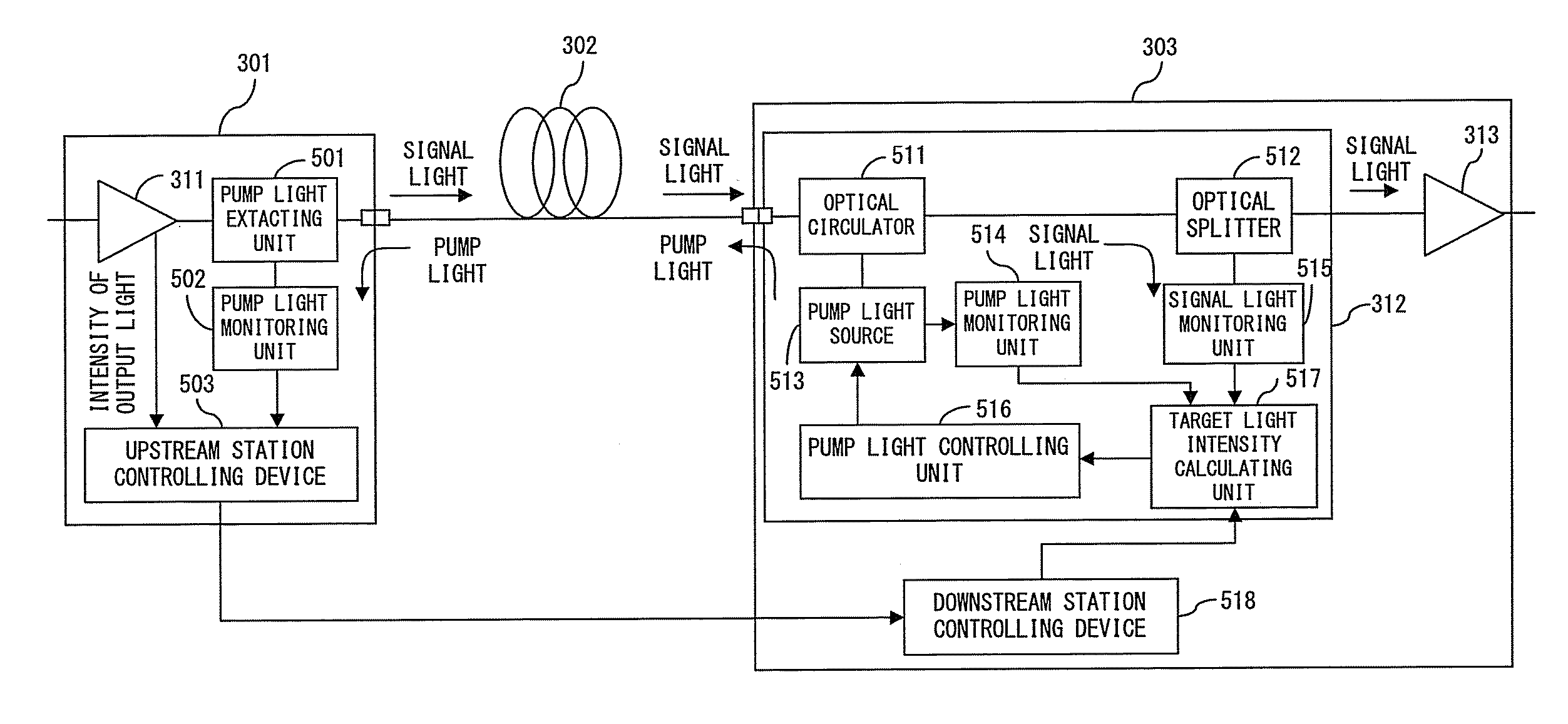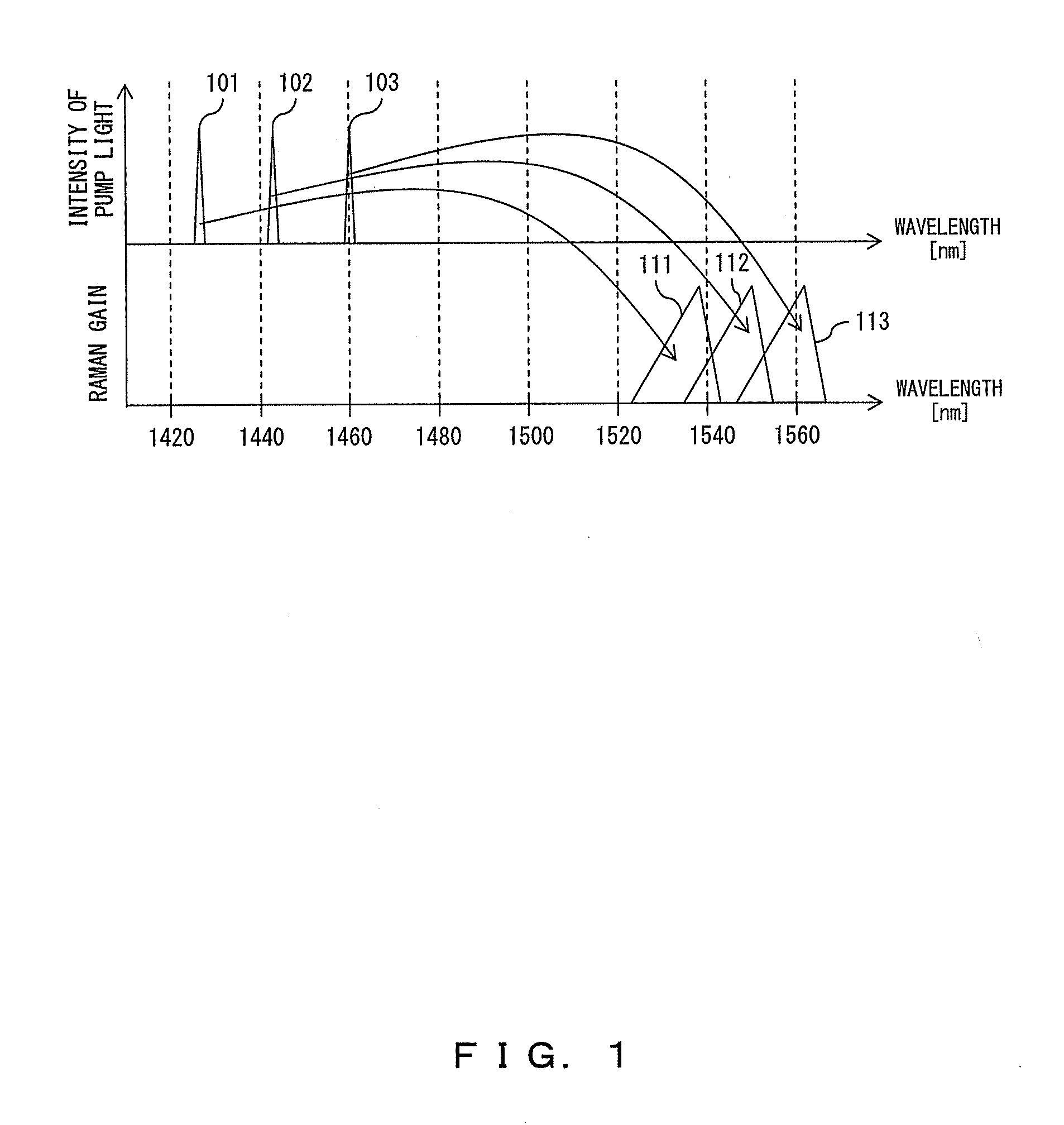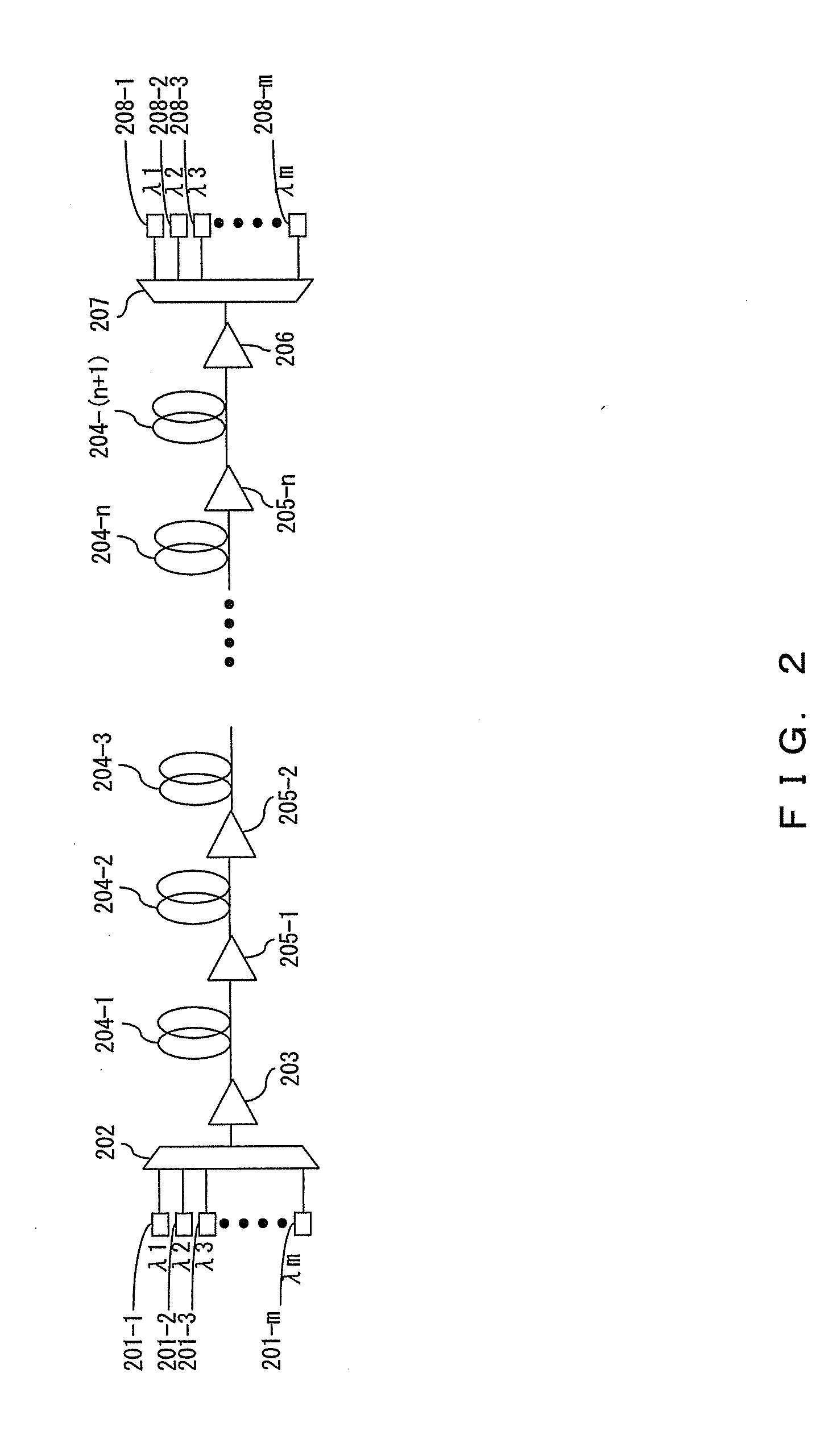Raman amplifier
a technology of amplifier and amplifier, applied in the field oframan amplifier, can solve the problems of affecting so as to improve the accuracy of estimation of ass light generation amount and satisfy the gain characteristic
- Summary
- Abstract
- Description
- Claims
- Application Information
AI Technical Summary
Benefits of technology
Problems solved by technology
Method used
Image
Examples
Embodiment Construction
[0054]The best mode for carrying out the present invention is described in detail below with reference to the drawings.
[0055]In the preferred embodiment, transmission line information such as the loss value of a transmission line fiber including losses within a receiving end station, the transmission line information representing the optical characteristic of the transmission line fiber, is monitored continuously on the basis of a light intensity difference between a residual pump light intensity monitored by a light receiving element placed in an upstream transmitting end station and the intensity of pump light made incident, from a Raman amplifier placed in a downstream receiving end station, to the transmission line fiber.
[0056]Additionally, a Raman gain is monitored continuously on the basis of the loss of a transmission line, which is obtained from the above described light intensity difference, the intensity of signal light output from the transmitting end station, and the int...
PUM
| Property | Measurement | Unit |
|---|---|---|
| wavelength | aaaaa | aaaaa |
| optical loss | aaaaa | aaaaa |
| residual intensity | aaaaa | aaaaa |
Abstract
Description
Claims
Application Information
 Login to View More
Login to View More - R&D
- Intellectual Property
- Life Sciences
- Materials
- Tech Scout
- Unparalleled Data Quality
- Higher Quality Content
- 60% Fewer Hallucinations
Browse by: Latest US Patents, China's latest patents, Technical Efficacy Thesaurus, Application Domain, Technology Topic, Popular Technical Reports.
© 2025 PatSnap. All rights reserved.Legal|Privacy policy|Modern Slavery Act Transparency Statement|Sitemap|About US| Contact US: help@patsnap.com



